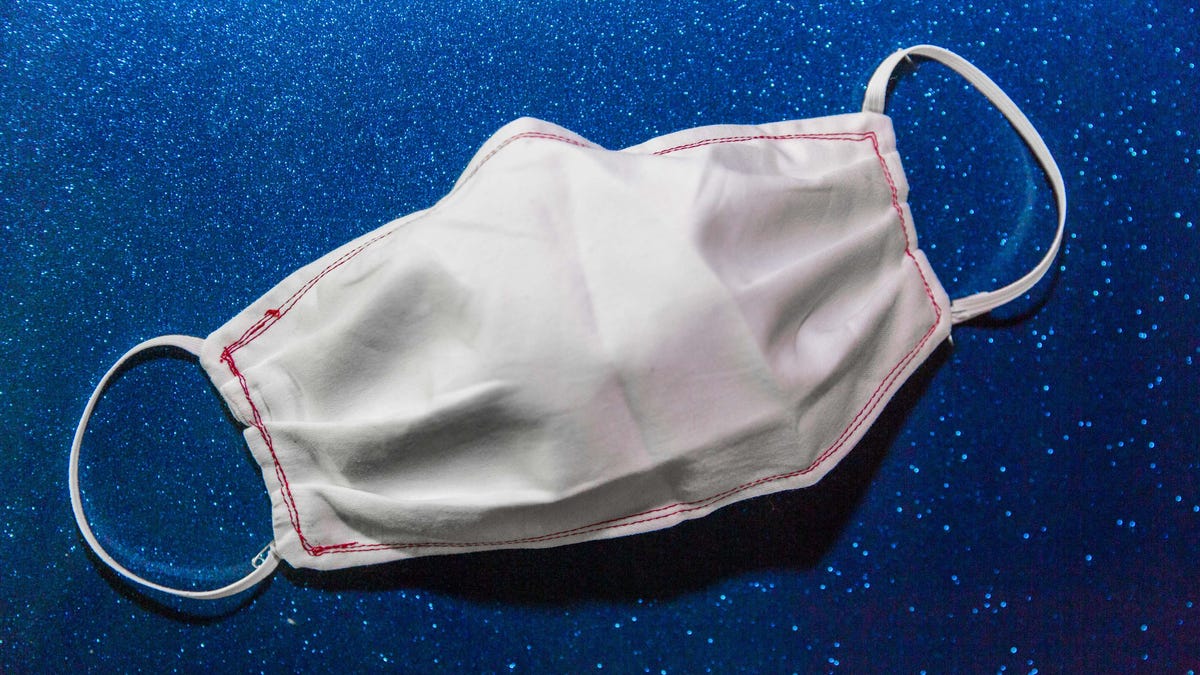 Why You Can Trust CNET
Why You Can Trust CNET Face mask feeling uncomfortable? Here's what you can do for ear and head relief
We've got some creative tips to help prevent chafed ears and the best fabric to use to help stay cool.

Make your face mask more comfortable by following these tips.
If the face masks you wear when you are out in public or in a store feel tight around the ears, or if the straps chafe your skin, you are not alone. With summer in full force and warmer temperatures around the country, we set out to figure out the best tips to help keep you comfortable while wearing a face mask or face covering.
Thanks to the coronavirus many states now have face mask mandates. Any mask or face covering you buy should be made from a breathable fabric, especially if it has multiple layers. The mask should fit above your nose and below your chin snugly, but not so tightly that it literally digs into your face. It's best practice to wash your hands before putting on a mask and after removing it.
Whether you're wearing a homemade face covering or a premade mask, here's how to keep comfortable while you're out and about.
Headband With Buttons with Matching Mask - Womens Facemask with Matching Headband - Headband with Matching Mask - Cotton Reusable Washable by Sebastianseven https://t.co/3DBXe6rGne pic.twitter.com/gl7NNGJMUr
— Sebastianseven (@sebastianseven1) April 27, 2020
Prevent your ears from becoming raw
Ear chafing from wearing masks has become a common complaint due to the elastic rubbing behind your ears. Some people have gotten creative and started making headbands with buttons to attach the elastic loops around.
If wearing a headband isn't really your style, you can always try the S-ring hook trick. To attach your face mask, take the loops and place them around each U of the hook. Make sure the S-ring is centered on the back of your head when you're wearing the mask. The hook should help your mask fit better around your face since the loops will be pulled snug.
If you don't have an S-ring hook lying around your house, you can find mask hooks on Etsy in different shapes, sizes and designs. Or place a piece of folded tissue between the strap and your ear for cushioning.
Only use 100% cotton face masks and coverings
Many people buy 100% cotton sheets for a reason: to stay cool. And that rule doesn't just apply to sheets -- you should also be on the lookout for face masks made from cotton, as well. The cotton material is considered to have better ventilation and will trap less of the moisture that builds up from breathing and sweating. And since your face mask may have multiple layers, you'll want a material that doesn't restrict your breathing.
There are also certain materials you'll want to avoid, like polyester, which can trap moisture through its water-resistant properties.
Your face mask should be snug but not tight.
Make it snug, not tight
While you want your mask to fit snugly around your face to help prevent respiratory droplets from escaping or coming in, you don't want it to be so tight that it hurts your face. Also, if it's too tight, that gives you less room to breathe well.
Wear your mask around the house before you leave to make sure you'll be comfortable wearing it for a long period of time, or long enough to go to the grocery store, for example. Adjust as needed while you're at home because the last thing you want to do is take off and readjust your mask while in public.
Change your mask if it feels gross
Now that it's starting to warm up outside, the longevity of your masks throughout the day may be shorter. That's because the mask can cause your face to sweat, creating moisture inside the mask. Once a mask becomes wet, it's no longer useful and should be changed immediately. Therefore, we suggest keeping an extra mask with you when you know you'll be out for a while.
When you get home, you'll need to properly remove your mask and place it in the laundry to be cleaned and ready to use again. For more information, here's more information on how to prevent acne while wearing a face mask.
Be wary of your face products
If you have dry skin, it's best to put on moisturizer before wearing a mask. This can help prevent skin irritation from where the mask rubs your face. If you have oily skin, you may want to avoid wearing a liquid foundation as that can clog your pores and cause your skin to break out. Not to mention, the foundation can also rub off on your mask, leading to decreased air filtration, making it harder to breathe.
If you have sensitive skin, you may want to forgo wearing makeup under your mask altogether and to cleanse your face before and after wearing a mask.
If whatever covering you're using now still isn't comfortable and secure, here's where you can buy a face mask online. Also, here's where you're expected to wear a face mask in public and what you need to know about making a homemade face mask.

